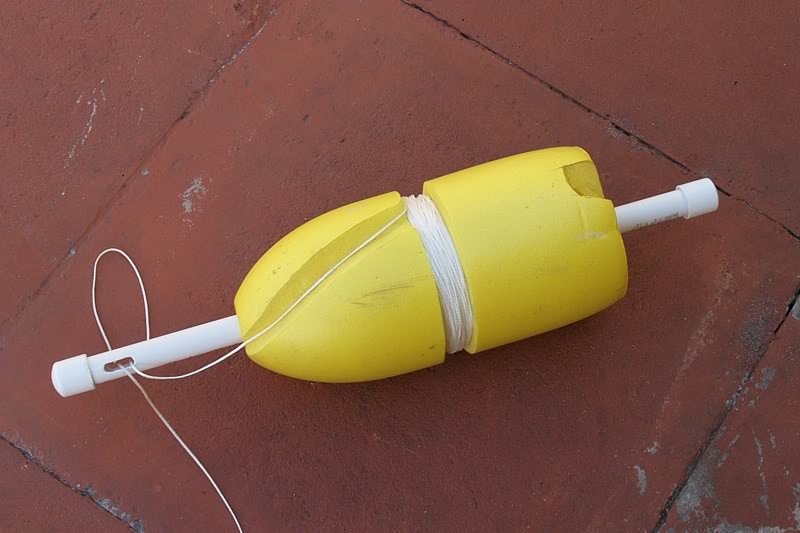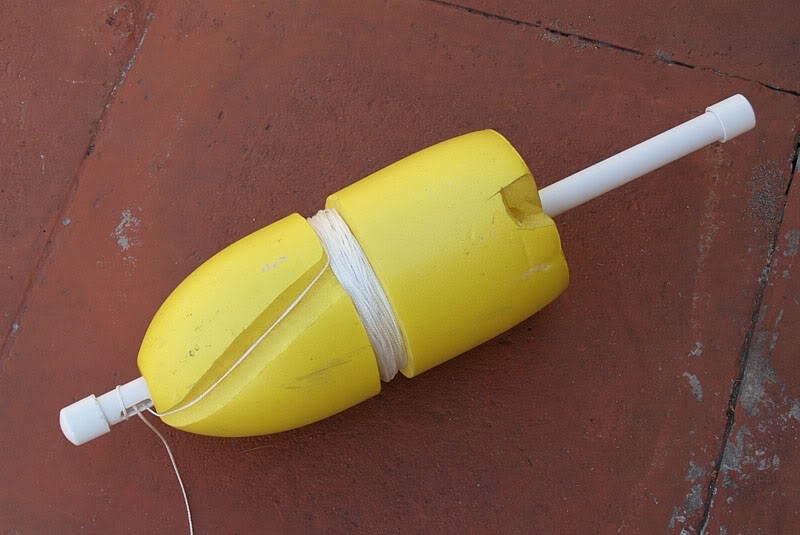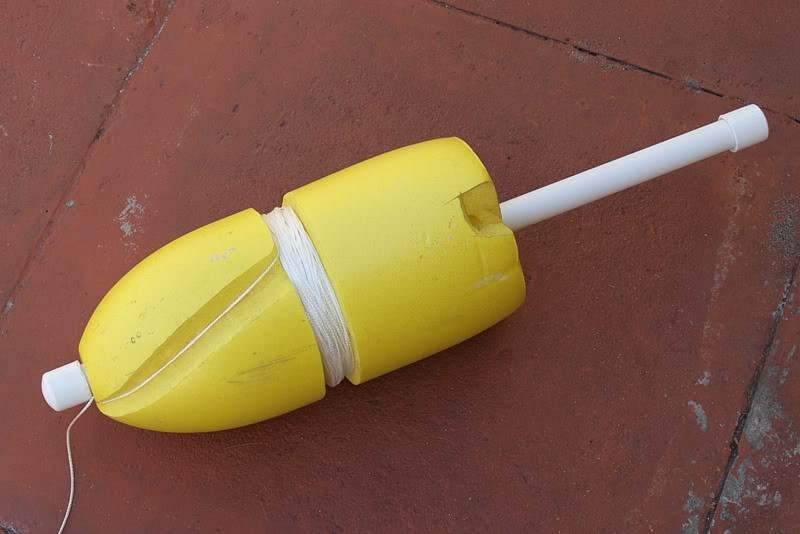As per Jim's suggestion I used the grinder to cut a groove in the float. Started out with the belt sander but it was cutting too wide and shallow although it is also feasible. The grinder however leaves a nicer cleaner cut and depth is easier to control. The PVC is used to anchor the bungee which is used as a stopper. The PVC can also be used to let the line out as you loosely grip it with two hands. A mono loop at one end can be used to attach an additional marker such as a flag. The line I used is braided nylon masonry line, 50m is spooled on in the pic.
Possible improvements:
1. Using a grinder with a wider wheel to nicely cut a wider groove, allowing thicker line to be used.
2. A round weight with a hole in the middle that can be stored on the PVC pipe when not in use.
Here's the cost breakdown:
Lobster buoy - $3 Boater's world.
Masonry line - $10 Home Depot. Enough to make three 50m markers
PVC pipe - $2 Home Depo. Enough to.. well you know.
2 PVC end caps - $.50 Home Depot.
Bungee - A couple of $$ per foot at West Marine.
Mono loop and crimp.
2lb lead weight - $3 Diver's direct.
Total cost per float - About $10.





